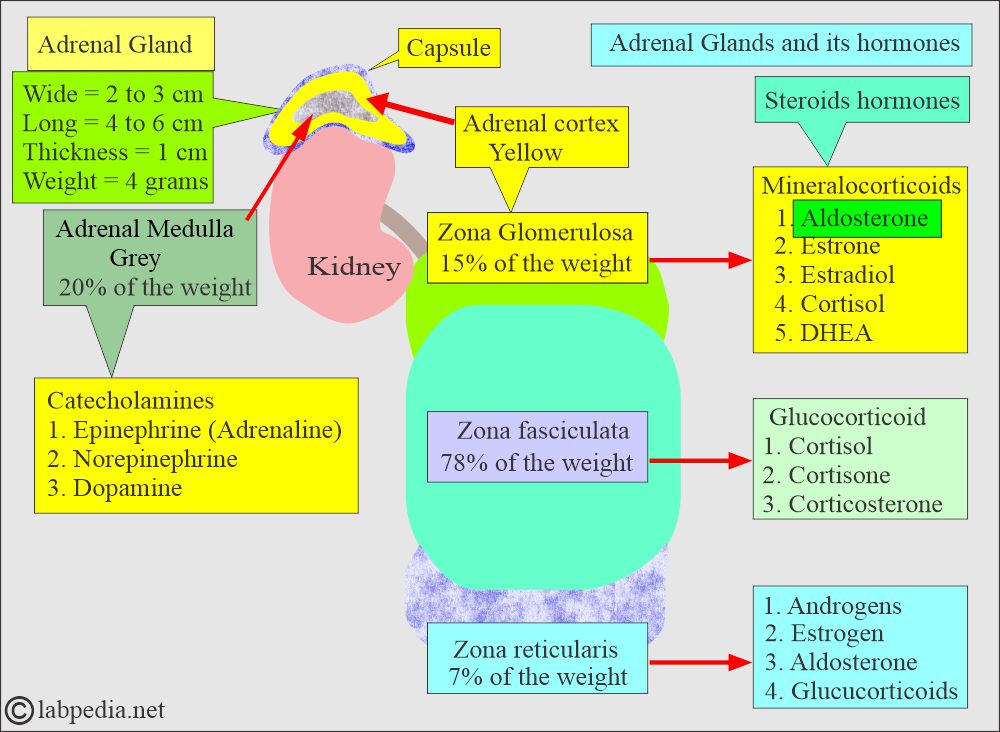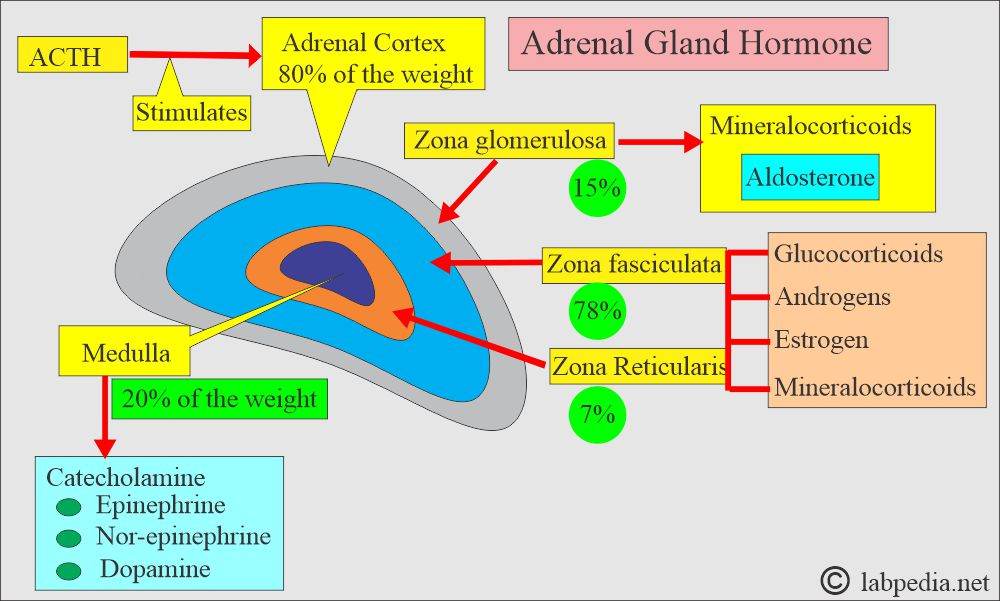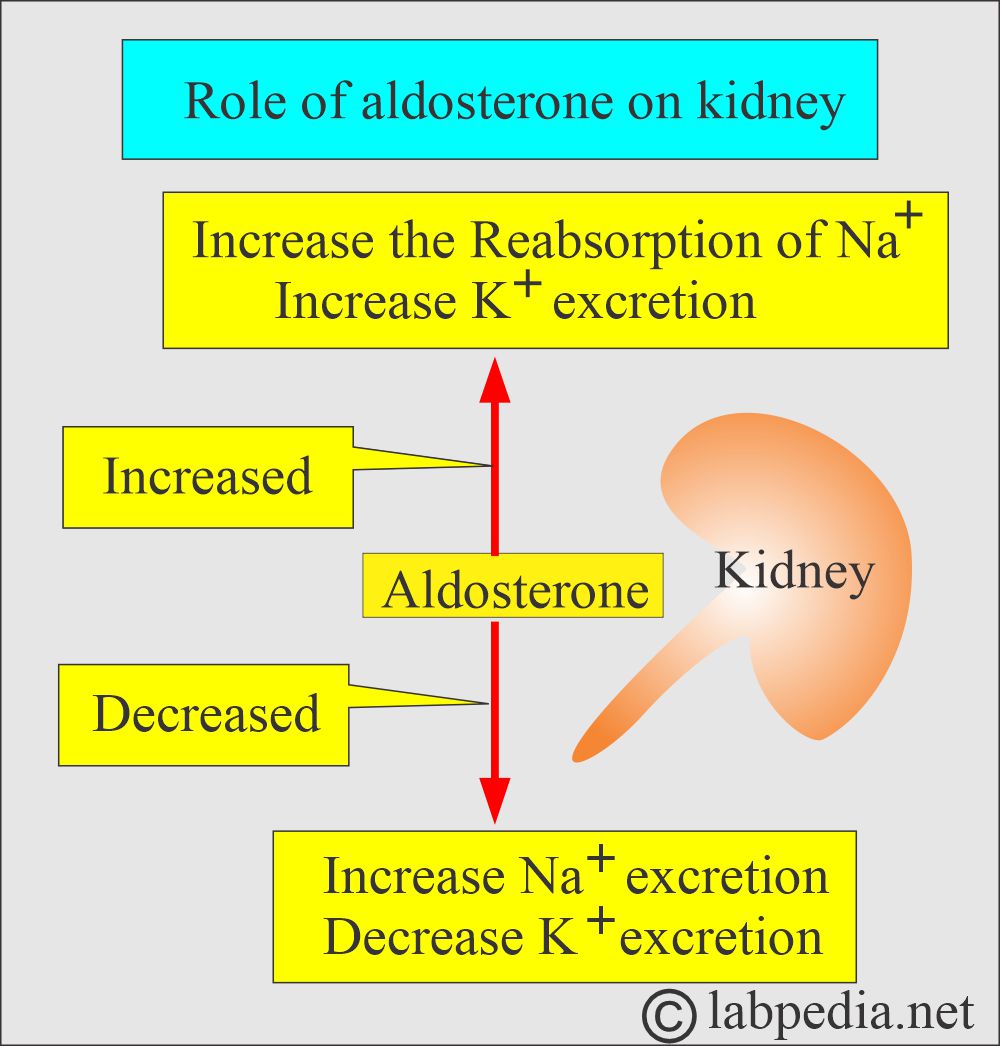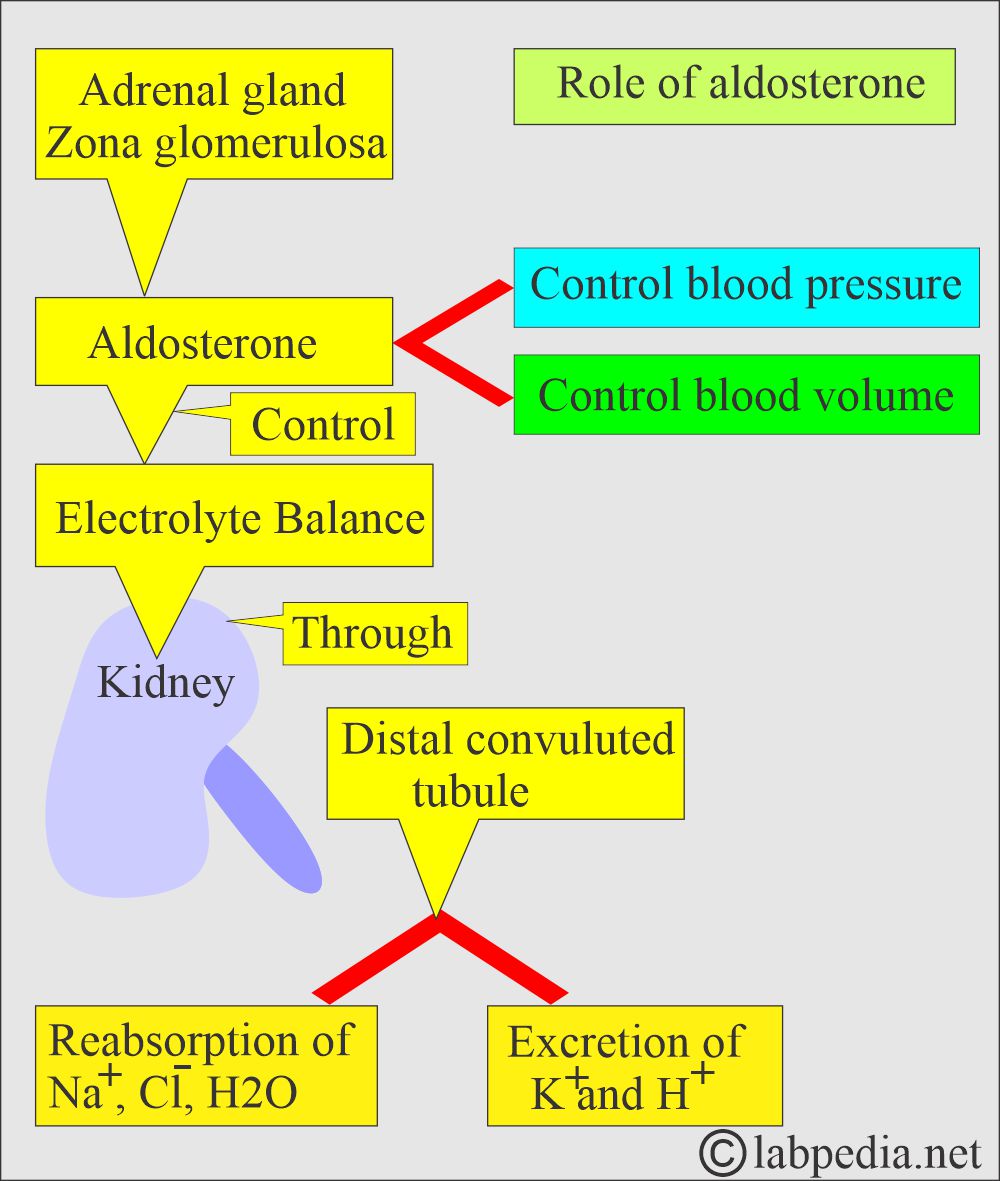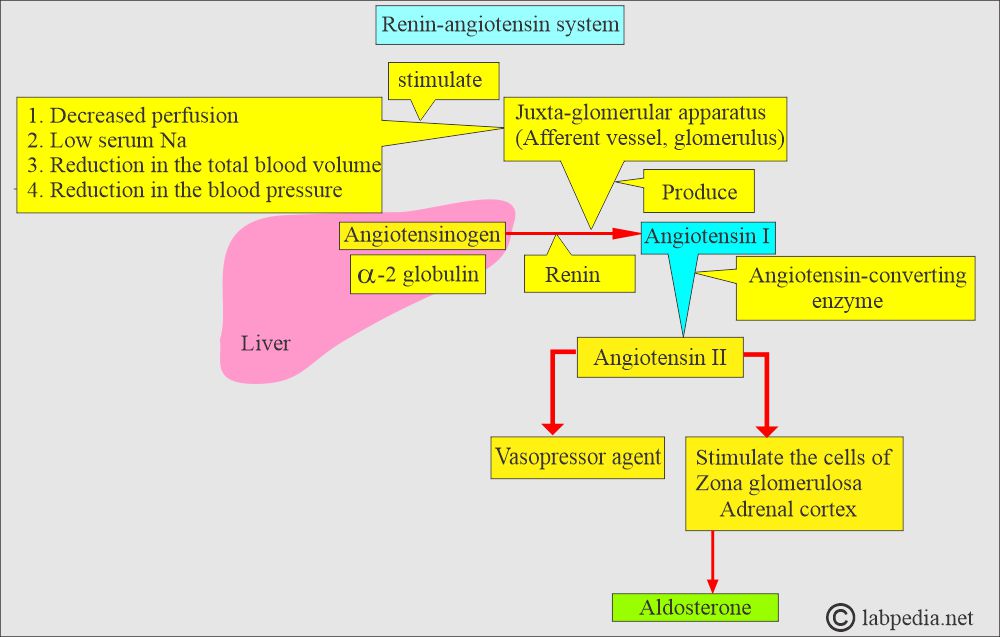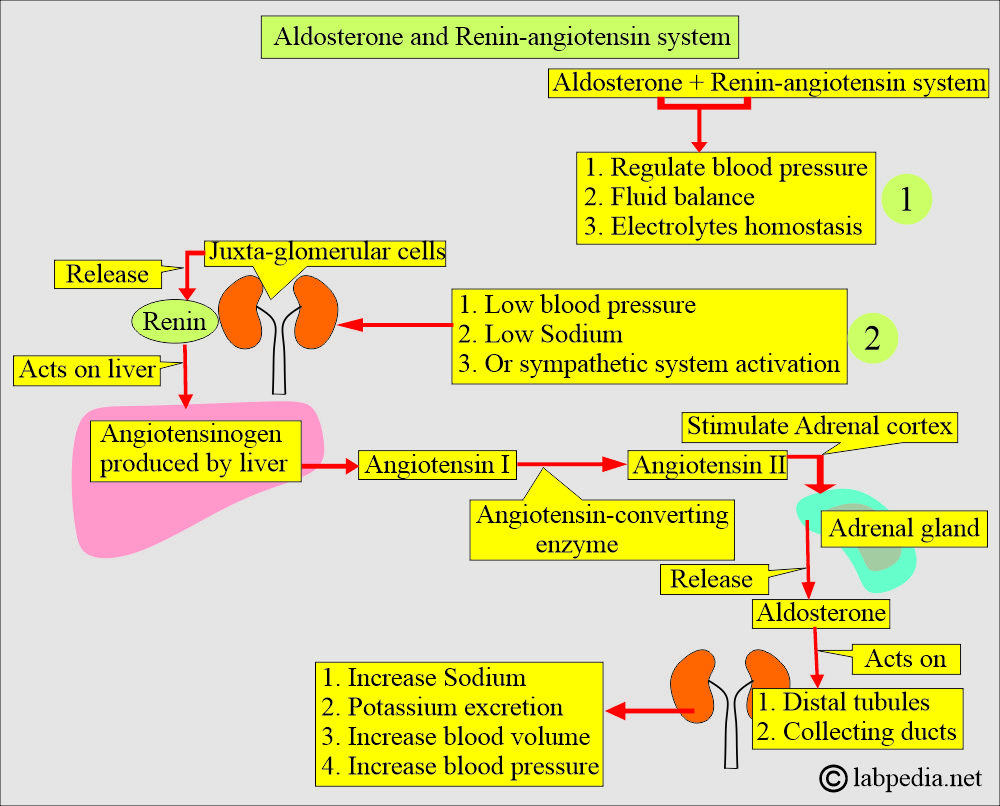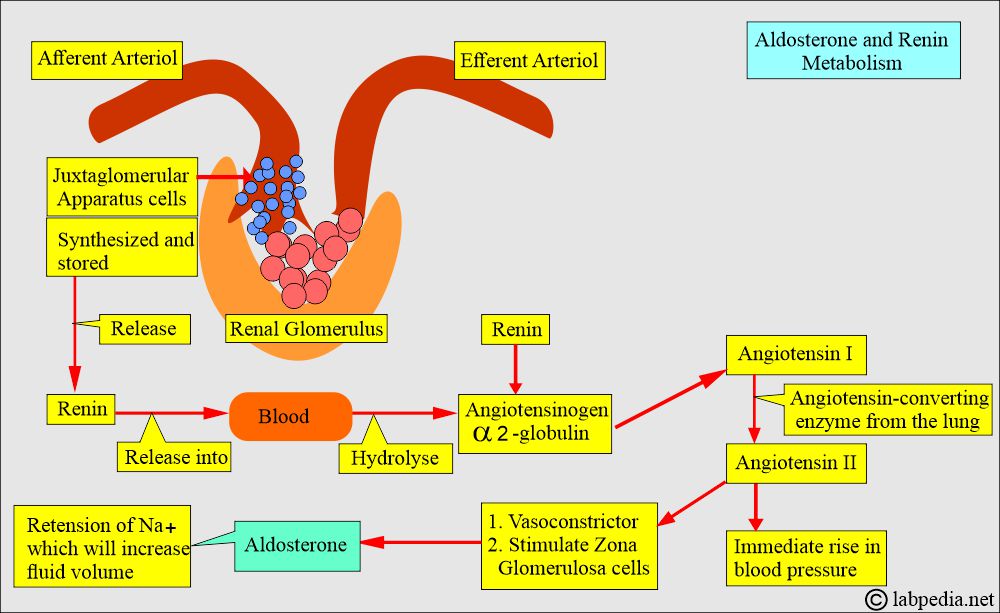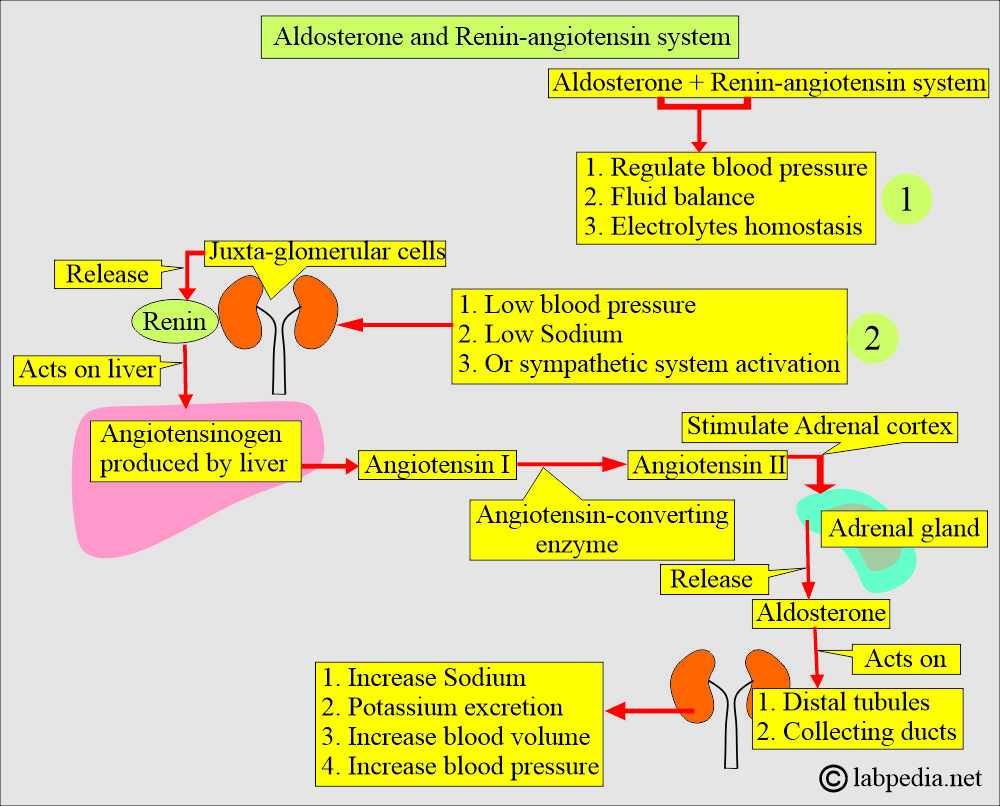Aldosterone and Renin-Angiotensin System
Aldosterone and Renin-Angiotensin
What sample is needed for Aldosterone?
- An aldosterone test can be done on plasma (heparin, EDTA, or citrate).
- The serum can also be used.
- Urine is collected for 24 hours with boric acid, and during collection, it is refrigerated.
- Two sample methods:
- The patient should rest and lie in a position for the first sample.
- The second sample can be taken when the patient is up and at least 4 hours after the first sample.
- The patient should be upright for at least 2 hours to collect the upright sample with unrestricted salt intake.
- Separate the serum/plasma immediately from the cells.
- The aldosterone peak is in the morning.
- 24 hours of urine can also be used to measure aldosterone.
- A urine sample is preferred to avoid the variation in aldosterone levels.
- The urine sample needs to be acidified with strong minerals or boric acid.
- Keep the urine refrigerated or on the ice for 24 hours immediately.
- The patient should be without any medication for 3 weeks.
- The patient should be on a normal sodium diet for 2 to 4 weeks before the test.
- In the case of low K+, it should be treated before the test.
- The sample was labeled according to whether the patient was lying or standing.
- The AM level is higher than the PM level.
What are the precautions for Aldosterone and Renin-Angiotensin?
- The patient should be on a normal salt diet for at least 2 weeks before taking the sample.
- Diuretics, antihypertensive drugs, estrogen, and oral contraceptives should be terminated 2 to 4 hours before taking the sample.
- No radioactive material should be given.
- Transport the sample on ice and freeze it as soon as possible after collecting it.
- Stress and exercise can stimulate increased aldosterone production by stimulating the adrenal cortex.
- Thermal stress, starvation, and late pregnancy may increase the level.
- Values are affected by posture, diet, pregnancy, and diurnal variation.
- Values are increased by upright posture.
- Increased licorice intake can decrease the level of aldosterone. Stop taking it for at least two weeks before the sample is taken.
- Drugs like diazoxide, hydralazine, diuretics, nitroprusside, potassium, and laxatives increase the aldosterone level.
- Drugs like propranolol (Inderal) and captopril decrease the aldosterone level.
- Stop the propranolol one week before the sample is taken.
- Heparin therapy may decrease the level.
- Aldosterone level decreases with age.
What are the indications for renin-angiotensin and aldosterone?
- Used to diagnose hyperaldosteronism.
- It differentiates between primary aldosteronism (Adrenal diseases) and secondary aldosteronism (Extra-adrenal diseases).
- A single random aldosterone test is useless unless a plasma renin level test is done simultaneously.
- These are linked to regulate blood pressure.
How will you discuss the pathophysiology of renin-angiotensin and aldosterone?
Aldosterone
- Aldosterone is the adrenal gland hormone (produced in the zona glomerulosa of the adrenal cortex), and it helps to control electrolyte balance.
- Aldosterone is the major mineralocorticoid the adrenal cortex produces at 200 µg/day.
What are the Aldosterone functions?
- The main functions of aldosterone:
- It maintains mineral regulation by its action on the distal convoluted tubule to increase sodium and chloride resorption.
- Aldosterone responds to the change in body volume. It accelerates the reabsorption of the Na+ in the distle tubules in exchange for K+ ions.
- Na+ is retained, and K+ is excreted when there is an excess production of hormones.
- If the hormone is deficient, reverse action occurs, increasing Na+ excretion and retaining the K+ ions.
- Aldosterone is secreted at a rate of 150 to 200 micrograms/day, regulating salt content and extracellular fluid levels.
- Profuse sweating, which leads to the loss of NaCl and the need to conserve the Na+, is caused by the aldosterone hormone.
- Its action is on the renal distal convoluted tubule.
- It regulates sodium, chloride, and water resorption in exchange for potassium excretion and hydrogen in the kidneys.
- Aldosterone helps maintain blood pressure and blood volume.
How would you describe the renin-angiotensin system function?
- It controls the secretion of aldosterone.
- Renin is a proteolytic enzyme synthesized and stored in the juxtaglomerular cells located in the terminal part of afferent arterioles.
- The renin-angiotensin system regulates aldosterone secretion.
- The second controller is ACTH, which stimulates the production of Aldosterone. It depends upon the following:
- Low serum sodium level.
- High serum potassium level.
- The production of angiotensin stimulates the secretion and synthesis of Aldosterone from the adrenal gland.
- Potassium controls the secretion of aldosterone.
- High level of potassium:
- Increases the secretion of Aldosterone.
- While low level decreases production.
- Low level of Sodium:
- It causes the release of Renin, which stimulates aldosterone secretion again.
- Aldosterone level has a diurnal variation:
- With a peak early in the morning.
- Lower level late in the afternoon.
What is the clinical significance of Aldosterone?
- Hyperaldosteronism is usually seen in the adenoma of the adrenal cortex (Conn’s syndrome) or bilateral adrenal nodular hyperplasia.
- An excessive aldosterone level leads to the retention of sodium and potassium excretion.
- These are hypertension and hypokalemia.
- There are weaknesses and polyuria.
What is a normal Level of Aldosterone?
Source 1
| Adult | ng/dL |
| Supine position | 3 to 16 |
| Upright | 7 to 30 |
| Infants and children | |
| Infant 3 days | 7 to 184 |
| 1 to 12 months | 5 to 90 |
| 1 to 2 years | 7 to 54 |
| 2 to 10 years | |
| Supine | 2 to 22 |
| Upright | 4 to 48 |
| Urine level 24 hours | <50 mcg/dL |
Another source
- Adult
- Upright position sitting for 2 hours
- Male = 6 to 22 ng/dL
- Female = 5 to 30 ng/dL
- Newborn = 5 to 60 ng/dL
Source 2
- Adult
- Supine = 3 to 10 ng/dL
- Upright
- Male = 6 to 22 ng/dL
- Female = 5y to 30 ng/dL
- Newborn = 5 to 60 ng/dL
- 1 week to 1 year = 1 to 60 ng/dL
- 3 to 5 years = 5 to 80 ng/dL
- 7 to 11 years = 5 to 70 ng/dL
- 11 to 15 years =5 to 50 ng/dL
- Urine = 2 to 26 µg /24 hours
Source 4
- Normal in an upright position
- Adult = 7 to 30 ng/dL (0.19 to 0.83 nmol/L)
- Adolescent = 4 to 48 ng/dL (0.11 to 1.33 nmol/L)
- Children = 5 to 80 ng/dL (0.14 to 2.22 nmol/L)
- Low-sodium diet = 3 to 5 times higher values
How would you discuss Primary Hyperaldosteronism?
- These patients’ signs and symptoms are:
- Primary hyperaldosteronism, also called Conn’s syndrome, results from an overproduction of aldosterone, usually by an adrenal cortex adenoma. Other causes are carcinoma and nodular hyperplasia.
- Hypertension.
- Muscular pains and cramps.
- Weakness.
- Tetany.
- Paralysis.
- Polyuria.
- Low Potassium level.
What are the causes of primary Hyperadrenalism?
- 70% of cases are due to aldosterone-producing tumor-like adrenal cortical adenoma in 54% to 90%.
- CT scans can diagnose 75% of the cases (60% to 90%).
- They do adrenal vein catheterization in a few centers and get samples from both side veins. If there is a significant difference between both sides, suggest adenoma.
- 30% of cases are caused by idiopathic bilateral adrenal hyperplasia; the range is 10% to 45%.
- Adrenal carcinoma is seen in <5% of the cases.
- Ectopic aldosterone production by the adrenal gland is embryologic rest within kidneys or, rarely, ovaries.
- Ectopic production of the ACTH or aldosterone by nonadrenal tumors.
- What are the lab findings on primary hyperaldosteronism?
- Decreased serum K+.
- Increased aldosterone production can not be suppressed by increasing the volume of Na+ intake.
- There is a diurnal variation of aldosterone, with lower values in the afternoon than in the morning.
- Also, there is an increased level in the upright position.
- There is suppressed plasma renin activity. This is a characteristic lab finding.
- The urinary secretion of aldosterone is increased. Urine estimation has the advantage of eliminating fluctuation.
- Primary hyperaldosteronism depends on three criteria:
- Hypertension without edema.
- Low plasma renin level that fails to increase with volume depletion.
- Increased aldosterone that fails to decrease with saline or angiotensin inhibition.
- Aldosterone stimulation test.
- Restrict the salt, and the Renin level will show little or no rise.
- Aldosterone suppression test.
- Give normal saline 1.5 to 2 L between 8 AM and 10 AM. Aldosterone will not be suppressed.
- A single random aldosterone test is of no diagnostic value unless plasma renin activity is done simultaneously.
How would you discuss the secondary Hyperaldosteronism?
- Usually associated with extra-adrenal stimulation or non-adrenal causes. e.g.
- Renal vascular stenosis or occlusion.
- Hypovolemia.
- Hyponatremia from diuretics or laxatives or low salt intake.
- Malignant hypertension.
- In case of pregnancy or use of estrogens.
- Edematous diseases like congestive heart failure, nephrotic syndrome, or cirrhosis.
- Potassium loading.
What are the causes of raised Aldosterone levels?
- In adrenocortical adenoma or carcinoma.
- Bilateral hyperplasia of the adrenal gland.
- Liver diseases.
- Congestive heart failure (CHF).
- Cirrhosis.
- Pregnancy.
- Nephrotic syndrome.
- Renovascular hypertension.
What are the values of aldosterone and renin in various diseases?
| Causes of the aldosteronism | Aldosterone level | Renin level |
|
|
|
|
|
|
|
|
|
|
|
|
|
|
|
|
|
|
|
|
|
|
|
|
|
|
|
|
|
|
What are the causes of decreased Aldosterone levels?
- In primary hyperaldosteronism.
- Salt-losing diseases.
- Toxemia of pregnancy.
What are the causes of decreased Aldosterone without hypertension?
- Addison’s Disease.
- Syndrome of hyperaldosteronism due to renin deficiency.
- Isolated cases of aldosterone deficiency.
What are the causes of decreased Aldosterone with hypertension?
- Excessive secretion of corticosterone.
- Excessive secretion of Deoxycorticosterone.
- Excessive secretion of 18-hydroxy desoxycorticosterone.
- Turner’s syndrome (in some cases).
- Diabetes mellitus.
- Acute alcoholic intoxication.
What are the examples of clinical Aldosterone?
| Clinical condition | Aldosterone | Potassium | Blood pressure | Renin activity |
|
|
|
|
|
|
|
|
|
|
|
|
|
|
|
How will you summarize the Aldosterone + renin-angiotensin system?
Questions and answers:
Question 1: What is the function of renin-angiotensin system?
Question 2: Where is the location of the juxtaglomerular apparatus?

